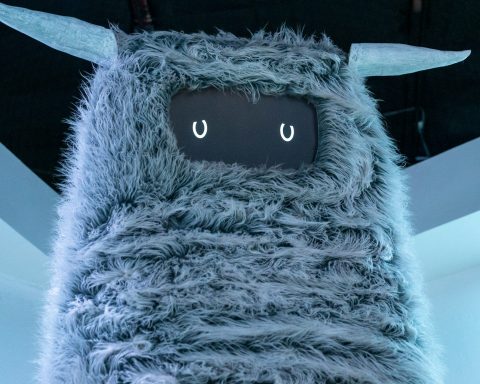 Andrew Papanikitas is Deputy Editor of the BJGP. He is on X: @gentlemedic
Andrew Papanikitas is Deputy Editor of the BJGP. He is on X: @gentlemedic
Seasons greetings, dear readers! One of my favourite Christmas traditions is the miscellany, often found in little piles at the cashier’s desk in a bookshop. A miscellany is any kind of volume in which a mixture of literary compositions, of different genres and by different authors, are collected. The reason I love a miscellany is that by turns the entries make me laugh, or think, or laugh nervously and think quite hard. The state of the art is the series of Christmas Crackers compiled by the historian, John Julius Norwich (1929–2018). In 1969, he gathered his favourite literary finds into a ‘Christmas Cracker’, a booklet for his friends. It became a word-of-mouth success, and ran to 50 ‘Crackers’. My personal favourite is a 1914 speech from an Oxford professor arguing that the purpose of a philosophy degree is the ability to detect, ‘When a man is talking rot’ (p.37).1
We have a suitably seasonal miscellany for you this December in a variety of genres! Some will make you chuckle, some will stress the heart, and all of them should make you think.
Storytelling, books, and the power of narrative
“‘Tis the season for reading and possibly the most varied set of reviews we have had in Life and Times for a while.”
‘Tis the season for reading and possibly the most varied set of reviews we have had in Life and Times for a while. Elke Hausmann reviews The Lady’s Handbook for Her Mysterious Illness. The author tells us that ‘“mysterious illnesses” are complex and complicated, very individual, definitely not in the patient’s head, but in her body, and, importantly, in the culture she lives in’.2 David Misselbrook reviews Safe Care in Paediatrics, a book that looks not only at the children who are our patients, but also at we ourselves, the practitioners.3 John Launer is haunted by a paperback purchased at the airport, a dark and twisty who-dunnit called Beast in the Shadows.4 I offer a selection of small books that might make a suitable stocking filler for a woke GP, taking in ghost stories about modern life, and more terrifying little books about economics, geopolitics, and the ‘everything’ store.5 David Jeffrey is inspired by Arthur W Frank’s reflections on Shakepeare’s play, King Lear. What can it and its principal characters teach us about the experience of illness?6
The importance that we attach to storytelling in medicine is cast into sharp relief by Frances Wedgwood. She shares her adventures in using narrative for postgraduate medical education, reflecting both on literary texts and treating ourselves and our stories as texts for shared learning.7 Events take a satirical turn when Ben Hoban’s narrator goes in search of a cheaper defibrillator, ‘So there I was, wondering what to do, when I noticed the shop next door. It had a flaking hand-painted sign announcing it as Imaginary Medical Solutions, and a window display that invited deep cleaning rather than curiosity.’ 8 Misselbrook reflects on a sense of vulnerability during seasonal travel, ‘For the first time for many years I felt that I had lost control. Suddenly my comfortable Western privilege wasn’t working. I felt stranded, helpless, a powerless fragment of a distressed and angry crowd.’ He invites us to imagine how much more extreme that must be for those who are displaced by conflicts and catastrophes.9 Alexis Paton issues a challenge to the UK Secretary of State for Health and Social Care — recognise the complexity that must be tackled if personally held healthcare records are to become a meaningful reality.10
Winter is coming, and clinics are getting busy
‘Tis the season of the busy clinic, tinged with festive colour, and coloured by the effects of our social world. As we gear up for winter, should we be identifying and trying to proactively manage patients to prevent unplanned hospital admissions? Nada Khan examines the guidance from NHS England.11 Alex Burrell explores how GP’s learn about obesity management, and associations between maternal obesity and childhood infections; diabetes and frozen shoulder; and poor care quality ratings and high use of freelance staff.12 Giles Dawnay captures the transition of autumn to winter in a poem about cancer.13 Is it better to think of patients as a body and a mind, or as a single entity that has both physical and conscious attributes? Alistair Appleby invites us to select the whole rather than the divided self.14
“‘Tis the season of the busy clinic, tinged with festive colour, and coloured by the effects of our social world.”
Thought for food
Autumn and winter are associated with feasting in a variety of cultures and faiths. It seems appropriate to take a general practice-themed look at food. Clare Ellison and Ursula Philpot introduce the Children and Young People’s Eating Disorder Decision Tree tool, which aims to assist time-poor clinicians with patients presenting with restricted oral intake, crucially differentiating between patients with body dysmorphia and those without.15
Despite regular reports about improving the diet of the population, little has changed in the UK. Eight years ago less than a third of people ate five portions of fruit and vegetables per day, and that figure hasn’t budged since. Chris Newman suggests that GPs can change this situation for the better.16
Miscellanies also offer value for readers with limited time and energy for reading, something that I feel is replicated in our articles. Whether you are reading this in an armchair by a cosy fire, in a starkly lit consulting room between patients, with family and friends, or on your own, seasons greetings from the BJGP team! See you in 2025.
References
1. Norwich JJ. The ultimate Christmas cracker. London: John Murray, 2019.
2. Hausmann E. Books: The Lady’s Handbook for Her Mysterious Illness: a Memoir. Br J Gen Pract 2024; DOI: https://doi.org/10.3399/bjgp24X740169.
3. Misselbrook D. Books: Safe Care in Paediatrics. Br J Gen Pract 2024; DOI: https://doi.org/10.3399/bjgp24X740157.
4. Launer J. Books: Beast in the Shadows. Br J Gen Pract 2024; DOI: https://doi.org/10.3399/bjgp24X740193.
5. Papanikitas A. Five stocking fillers for the woke GP. Br J Gen Pract 2024; DOI: https://doi.org/10.3399/bjgp24X740133.
6. Jeffrey D. Books: King Lear: Shakespeare’s Dark Consolations. Br J Gen Pract 2024; DOI: https://doi.org/10.3399/bjgp24X740181.
7. Wedgwood F. Narrativity and the teaching of consultation skills: Godwin’s story. Br J Gen Pract 2024; DOI: https://doi.org/10.3399/bjgp24X740085.
8. Hoban B. Imaginary Medical Solutions. Br J Gen Pract 2024; DOI: https://doi.org/10.3399/bjgp24X740061.
9. Misselbrook D. A brief vulnerability. Br J Gen Pract 2024; DOI: https://doi.org/10.3399/bjgp24X740205.
10. Paton A. Passport to medical freedom? Only for the lucky digitally enabled. Br J Gen Pract 2024; DOI: https://doi.org/10.3399/bjgp24X740049.
11. Khan N. Avoiding hospital admissions this winter: the challenge for general practice. Br J Gen Pract 2024; DOI: https://doi.org/10.3399/bjgp24X740037.
12. Burrell A. Yonder: Obesity care, maternal body mass index and childhood infections, frozen shoulder and diabetes, and locums. Br J Gen Pract 2024; DOI: https://doi.org/10.3399/bjgp24X740097.
13. Dawnay G. Poem: Crab Apples. Br J Gen Pract 2024; DOI: https://doi.org/10.3399/bjgp24X740145.
14. Appleby A. Beyond mental or physical: can critical realism unify medicine’s divided self? Br J Gen Pract 2024; DOI: https://doi.org/10.3399/bjgp24X740121.
15. Ellison C, Philpot U. Confusion between avoidant restrictive food intake disorder, restricted intake self-harm, and anorexia nervosa: developing a primary care decision tree. Br J Gen Pract 2024; DOI: https://doi.org/10.3399/bjgp24X740109.
16. Newman C. Turning the tide on healthy eating. Br J Gen Pract 2024; DOI: https://doi.org/10.3399/bjgp24X740073.
Featured photo by Aaron Burden on Unsplash.







[…] https://bjgplife.com/miscellany/ […]